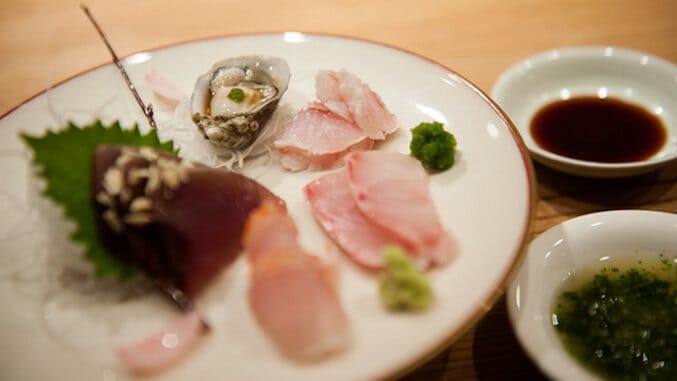Michelin’s Evolving Institution
Photos courtesy of Dusek's and Nancy Borowick
One star: A very good restaurant in its category
Two stars: Excellent cooking, worth a detour
Three stars: Exceptional cuisine, worth a special journey
Bruce Finkelman and Craig Golden are happy men. Their restaurant Dusek’s in Chicago won a Michelin star last year under the leadership of Chef Jared Wentworth, and in 2017 they’ll retain it. The damndest thing is that they serve a cheese-stuffed pretzel and a fun take on chicken and waffles. By all accounts it sounds like a high-class neighborhood bar with as big a passion for beer as food. Isn’t Michelin supposed to be about jackets and ties, and super-slick sommeliers? The times, they are certainly changing — and it’s great.
“Michelin’s goal is to pick out the best of each category of restaurants in each [major] city in the world,” said Bruce Finkleman, managing partner at 16 On Center, the company that owns Dusek’s. “As presenting food evolves, it is really amazing to see Michelin evolving with it as well.”
Bibendum. That’s the French name for the Michelin Man. The perpetually smiling, puft-staying mascot is one of the world’s oldest trademarks. For more than 100 years Bibendum has advertised tires. That’s him on the cover of the Michelin Guide too, cheerfully suggesting tremendous restaurants. But unlike his tires, the guide has only recently taken on the world.
 Photo courtesy of Dusek’s
Photo courtesy of Dusek’s
In 1900 the Michelin tire company to produce a road guide for the roughly 3,000 car owners in France. The guide’s primary remit was advancing the motor industry, hence selling more tires. The first edition contained maps, gas stations, servicing locations, and hotels and restaurants throughout France. Gradually, more guides were offered: first for a few locations in North Africa, and then for different countries in Europe.
The popularity of the restaurant section prompted Michelin to adapt. After the First World War they adopted the gold standard for the very best in their guides — the Michelin star. While there are other superb and influential organizations, like the The World’s 50 Best Restaurants and Zagat, Michelin remains one of the most recognizable. Replete with a team of covert inspectors and armed with a three-star rating tier for the elite, the company continued with a formula that had the ability to crush or charm chefs and restaurants alike. But what did that mean?
 Photo courtesy of Dusek’s
Photo courtesy of Dusek’s
Well, for the longest time, the Michelin guide was… francocentric. Haute cuisine, and specifically food prepared in the French method, seemed to be the underlying criteria for stars. Though European countries with strong culinary identities like Italy, Spain and Germany got guides of their own in the middle of the last century, Michelin could never seem to take seriously anything not “high cuisine” in style.
-

-

-

-

-

-

-

-

-

-

-

-

-

-

-

-

-

-

-

-

-

-

-

-

-

-

-

-

-

-

-

-

-

-

-

-

-

-

-

-

 Photo by Nancy Borowick
Photo by Nancy Borowick






































